Immune response: the Achilles’ heel of the stem cell-based regenerative therapies
Besides trauma, several pathological conditions which directly affect the normal functioning of organs, require new therapeutic strategies to repair damaged or diseased tissues. Tissue regeneration
[...] Read more.
Besides trauma, several pathological conditions which directly affect the normal functioning of organs, require new therapeutic strategies to repair damaged or diseased tissues. Tissue regeneration is a complex and spatiotemporal process involving a plethora of cell types, including various immune cells and stem cells in a synchronized relationship. However, individual parameters, namely ageing, obesity, diabetes, and chronic conditions, have been intrinsically correlated with poor regenerative properties of adult tissues. While vast progress has been made regarding stem cell-based therapy to direct self-healing, the immune response is still the Achilles’ heel of such strategies. Whereas the role of effector immune cells has been well defined along the regenerative process, an understanding of the behavior of the main adult stem cells, namely mesenchymal stem cells (MSCs) and hematopoietic stem and progenitor cells (HSPCs), along the different phases of the regenerative process could clarify how these stem cells can be used to positively influence the immune response. In this scope, this review highlights the main interactions between these stem cells and immune cells during tissue repair, exploring the most important regenerative properties of stem cells and correlating them with the modulation of the immune response during tissue regeneration. Furthermore, the utmost strategies used to explore how the behavior and stem cell fate are affected by specific microenvironments and/or stimuli usually found during a regenerative process, are emphasized. This clarification may provide critical insight into the molecular mechanisms by which stem cells modulate the immune response in a positive feedback loop toward tissue repair.
Cláudia S. Oliveira, Freni K. Tavaria
View:1877
Download:60
Times Cited: 0
Besides trauma, several pathological conditions which directly affect the normal functioning of organs, require new therapeutic strategies to repair damaged or diseased tissues. Tissue regeneration is a complex and spatiotemporal process involving a plethora of cell types, including various immune cells and stem cells in a synchronized relationship. However, individual parameters, namely ageing, obesity, diabetes, and chronic conditions, have been intrinsically correlated with poor regenerative properties of adult tissues. While vast progress has been made regarding stem cell-based therapy to direct self-healing, the immune response is still the Achilles’ heel of such strategies. Whereas the role of effector immune cells has been well defined along the regenerative process, an understanding of the behavior of the main adult stem cells, namely mesenchymal stem cells (MSCs) and hematopoietic stem and progenitor cells (HSPCs), along the different phases of the regenerative process could clarify how these stem cells can be used to positively influence the immune response. In this scope, this review highlights the main interactions between these stem cells and immune cells during tissue repair, exploring the most important regenerative properties of stem cells and correlating them with the modulation of the immune response during tissue regeneration. Furthermore, the utmost strategies used to explore how the behavior and stem cell fate are affected by specific microenvironments and/or stimuli usually found during a regenerative process, are emphasized. This clarification may provide critical insight into the molecular mechanisms by which stem cells modulate the immune response in a positive feedback loop toward tissue repair.
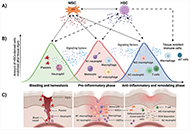 Immune response: the Achilles’ heel of the stem cell-based regenerative therapiesOpen AccessReviewBesides trauma, several pathological conditions which directly affect the normal functioning of organs, require new therapeutic strategies to repair damaged or diseased tissues. Tissue regeneration [...] Read more.Cláudia S. Oliveira, Freni K. TavariaPublished: June 30, 2023 Explor Immunol. 2023;3:233–254
Immune response: the Achilles’ heel of the stem cell-based regenerative therapiesOpen AccessReviewBesides trauma, several pathological conditions which directly affect the normal functioning of organs, require new therapeutic strategies to repair damaged or diseased tissues. Tissue regeneration [...] Read more.Cláudia S. Oliveira, Freni K. TavariaPublished: June 30, 2023 Explor Immunol. 2023;3:233–254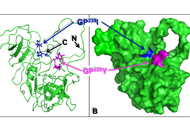 Conformational and functional regulation of the chicken tumor virus number 10 (CT10) regulator of kinase II (CrkII) adaptor protein by cyclophilin AOpen AccessReviewThe Src homology 2 (SH2) and SH3 domain-containing chicken tumor virus number 10 (CT10) regulator of kinase (Crk) adaptor proteins include three cellular members that serve as integral constituents [...] Read more.Noah IsakovPublished: June 30, 2023 Explor Immunol. 2023;3:217–232
Conformational and functional regulation of the chicken tumor virus number 10 (CT10) regulator of kinase II (CrkII) adaptor protein by cyclophilin AOpen AccessReviewThe Src homology 2 (SH2) and SH3 domain-containing chicken tumor virus number 10 (CT10) regulator of kinase (Crk) adaptor proteins include three cellular members that serve as integral constituents [...] Read more.Noah IsakovPublished: June 30, 2023 Explor Immunol. 2023;3:217–232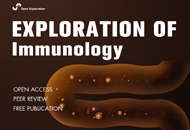 The aging process and its relation to periodontal conditionsOpen AccessReviewPeriodontal tissue destruction can cause complaints for sufferers. Inflammatory conditions of the gingiva, bleeding gums, and even tooth loss are clinical features of the destruction of the periodon [...] Read more.Pitu WulandariPublished: June 30, 2023 Explor Immunol. 2023;3:207–216
The aging process and its relation to periodontal conditionsOpen AccessReviewPeriodontal tissue destruction can cause complaints for sufferers. Inflammatory conditions of the gingiva, bleeding gums, and even tooth loss are clinical features of the destruction of the periodon [...] Read more.Pitu WulandariPublished: June 30, 2023 Explor Immunol. 2023;3:207–216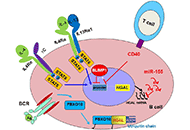 Role of an adaptor protein human germinal center-associated lymphoma (HGAL) in cell signaling and lymphomagenesisOpen AccessReviewHuman germinal center (GC)-associated lymphoma (HGAL) is a multi-domain adaptor protein expressed in GC B lymphocytes, T follicular helper (Tfh) cells and lymphomas derived from these cells. HGAL ex [...] Read more.Xiaoyu Jiang, Izidore S. LossosPublished: June 28, 2023 Explor Immunol. 2023;3:186–206
Role of an adaptor protein human germinal center-associated lymphoma (HGAL) in cell signaling and lymphomagenesisOpen AccessReviewHuman germinal center (GC)-associated lymphoma (HGAL) is a multi-domain adaptor protein expressed in GC B lymphocytes, T follicular helper (Tfh) cells and lymphomas derived from these cells. HGAL ex [...] Read more.Xiaoyu Jiang, Izidore S. LossosPublished: June 28, 2023 Explor Immunol. 2023;3:186–206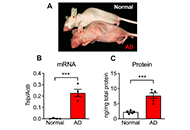 STIM/Orai-mediated calcium entry elicits spontaneous TSLP overproduction in epidermal cells of atopic dermatitis miceOpen AccessOriginal ArticleAim: Atopic dermatitis (AD) is a pruritic, chronic inflammatory skin disease. Thymic stromal lymphopoietin (TSLP) is highly expressed in the epidermis of patients with AD and induces T helper 2 ( [...] Read more.Masanori Fujii ... Susumu OhyaPublished: June 11, 2023 Explor Immunol. 2023;3:174–185
STIM/Orai-mediated calcium entry elicits spontaneous TSLP overproduction in epidermal cells of atopic dermatitis miceOpen AccessOriginal ArticleAim: Atopic dermatitis (AD) is a pruritic, chronic inflammatory skin disease. Thymic stromal lymphopoietin (TSLP) is highly expressed in the epidermis of patients with AD and induces T helper 2 ( [...] Read more.Masanori Fujii ... Susumu OhyaPublished: June 11, 2023 Explor Immunol. 2023;3:174–185